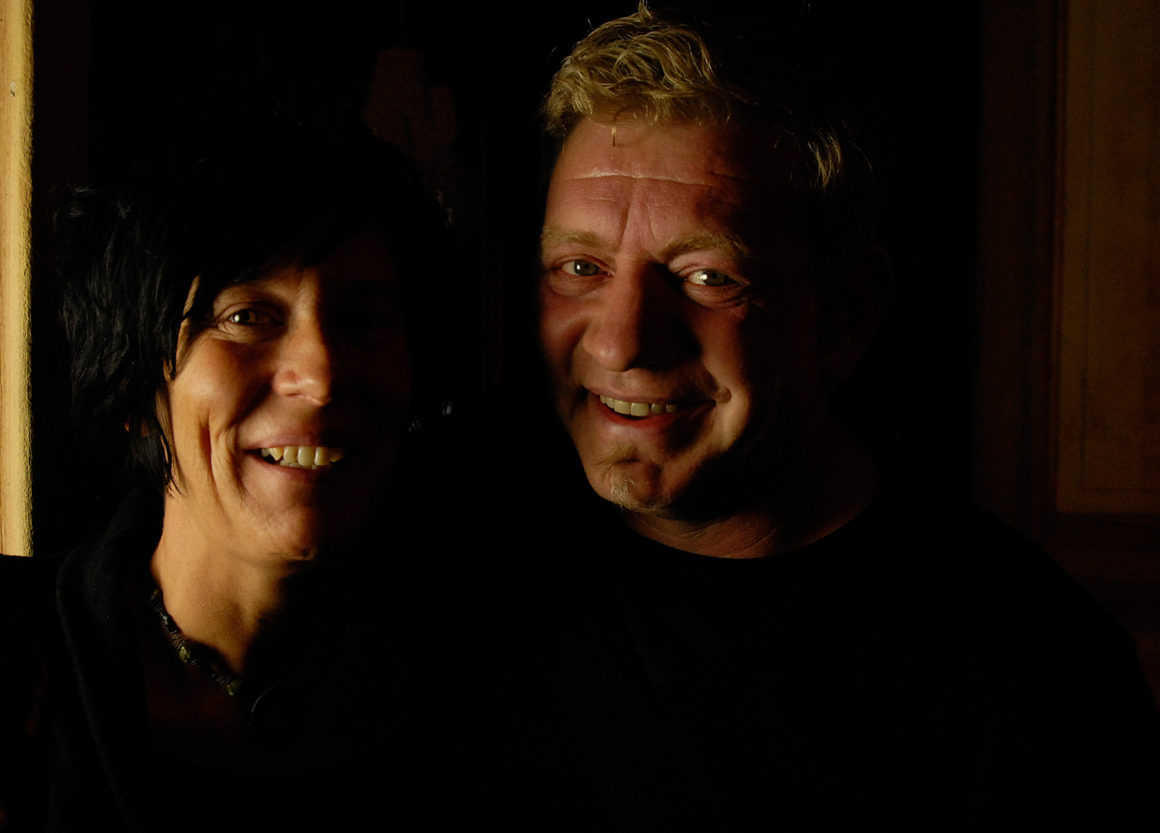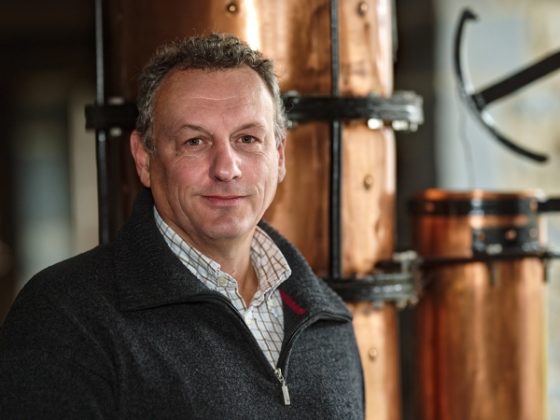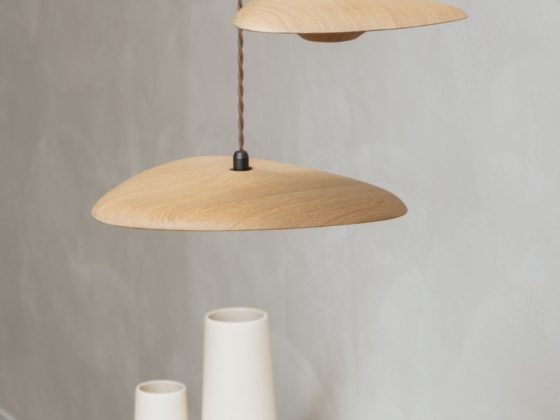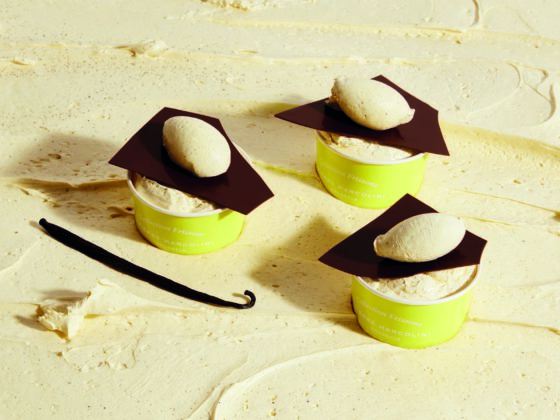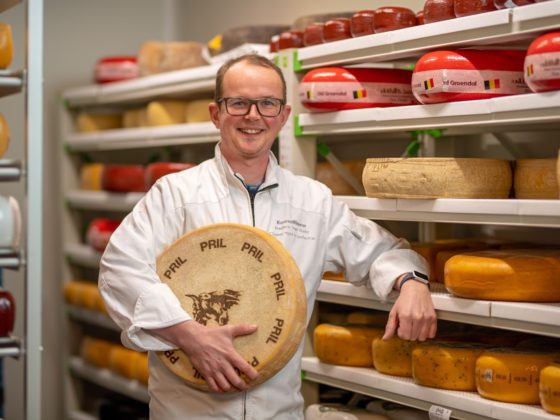Beauty, mystery and magic are the foundations of their work. The manufacture of porcelain light objects takes time, time for a craft to mature. The lighting of Coup-de-Foudre seems fragile, but at the same time it is very strong. Their love for the material is captivating, unpredictable and requires a finesse that no manual can describe. They bring out an unexpected beauty, creating a kind of magic that enlightens. A sense of liberation, pride and poignancy in the knowledge that what they have created contains light and warmth with which they can touch others. Pleased to meet you, Goedel & Jan!
Could you briefly explain the history of your business?
Jan: Goedel has been studying ceramics for some time. She followed a 4-year course in Bruges and also several workshops with well-known ceramists. For her final piece , she had the idea of modelling all kinds of figures, people who crawled out of the ground to uproot themselves and wanted to take a different path. But you can only grow and uproot when there is a point of light in your life. This is when I came into the story and together we actually made our first light object, called ‘Le soleil’. At the very beginning, we had a simple gas kiln where you had to stay with it to regulate the temperature and stay up all night until the kiln quietly reached a temperature of 1300°, very basic therefore. But why porcelain? Firstly, because the material and working with your hands has a healing effect, it clears your head and harmonises body and mind, but above all because it is a natural material with an extraordinary transparency. It has a fragility that no other material can achieve. Our light objects often have a feminine touch because of the organic shapes, the transparency and the white colour. It is a very fascinating material. Goedel’s final work was a great success and she graduated with flying colours. A year later, two artists, friends of hers, asked us to participate in an exhibition. They asked if we wanted to make light objects. We didn’t hesitate for long, got to work and created five light sculptures for the exhibition ‘fragile grey‘. The visitors and the press were wildly enthusiastic. Two lighting businesses that work with artists also came to see us and wanted to hang our creations in their showroom. We hesitated, because neither of us intended to focus solely on lighting. Now, 15 years later, we are very happy that we took that step.
From where does your knowledge of working with lighting come?
Jan: I studied electronics. I played at a handball club in Kortrijk and to make ends meet financially, we always organised parties and these were organised without any initial capital. I took care of the organisation and also of the stage and lighting. That is how I learned to be creative without a budget. You can actually create a lot of atmosphere with limited means. Lighting ultimately determines the atmosphere and that has always been a bit of a passion for me.
Is it important to you to create a certain atmosphere through light?
Jan: Yes absolutely. It’s always the intention that we design full light, not just mood lighting, but it has to be nice and warm light. We don’t make ordinary lighting, but inspiring light objects. Our aim is to create a sculpture, something that is also beautiful in the room without the light being on. That’s why we always look at the space, listen to our customers and design something that completely fits into the interior.
Good: We are actually more under the heading of applied lighting, I think. It is lighting, but I see it more as applied art. We want to touch people when they see our work.
Do you have a particular approach to carrying your identity forward?
Good: Yes, definitely. A lot of people who work with porcelain work with moulds and that’s what we do very little of. We actually work on each light object, no matter how small it may be, with our hands, very manually, so that we don’t make the same thing twice. Organic forms appeal to me enormously, I love the beauty of natural imperfection. Meanwhile, I have 20 years of experience with porcelain and throughout the years you discover techniques. This is what makes it so fascinating. By failing you get new insights.
Jan: It is indeed still a search. For us, the most important thing is that we can continue to create and continue our creative story. You obviously need to sell the light objects, but we have reached a point where we want to remain unique in what we do and continue to look for new artistic and inspiring light objects. That gives us wings…
How do you manage to give your customers a visual image of what you have in mind?
Good: We have an experience space in Courtrai and Brussels where people can come and see our lighting. When we are working on a big project, sometimes my daughter, who is an architect, draws the pictures. In the meantime, we have been able to light a lot of houses and by taking photos of other projects, you can show your customers where you want to go. The customers actually have a lot of confidence in us. When they see our product in real life, they usually fall in love with it immediately. It’s the combination of the product, a good connection with our customers and indeed being able to feel the space well.
How do you feel about working together as a husband and wife in your business?
Jan: Actually, that goes quickly. Everyone has their own studio. To some extent it is each his own thing. Goedel really is the expert in porcelain. I know a lot about it, but Goedel has the love and passion for the material. If Goedel is working on something new, I will check fairly quickly whether it is technically feasible. Then we discuss the design together and I take care of the technical development. We are actually a very good team.
Do you have any particular sources of inspiration that help you create your designs?
Good thing: Porcelain is not a simple material, it shrinks and deforms during the firing process. Porcelain also has a memory. Technical knowledge is certainly required. The search is endless. Again and again you push boundaries and this opens new perspectives. We ourselves are not going to look for enlightenment, but we are both passionate about art, that inspires us. Also the nature continues to fascinate us, the natural organic forms and structures we also reflect in our lighting. I find it incredibly fascinating. I am really happy in my studio. My dream came true. To live from art and make art for a lifetime.


Goodness, do you sometimes feel that that creative process can have a brake?
Good thing: After our first exhibition, I did have some trepidation that we would never be able to create such unique designs again, but now that we are 20 years on, it feels wonderful to discover that this is endless. My ceramics teacher once told me ‘there is no one here with ideas like yours’ when I knew so little technically at the time. That was the best compliment I could get. I often think back to it.
Is there a design that is closer to your heart, not your coup-de foudre, but your coup-de-coeur?
Good: I find that hard to say because everything evolves. Sometimes you say, wow that’s the most beautiful and original design, and then you design something new… It changes over the years. I have to say, I still think one of our first designs, “La Vierge”, is a very beautiful light object.
Jan: To be able to make the design“Mozart”, it really took a two-year quest, with ups and downs. The search was fascinating, you have to learn from your mistakes and find the strength and courage to go on again. Over and over again. Being on the road opens doors, this process ensures that you discover other possibilities.
Good thing: Indeed, there are always limitations, but these are precisely the challenges and I love them.

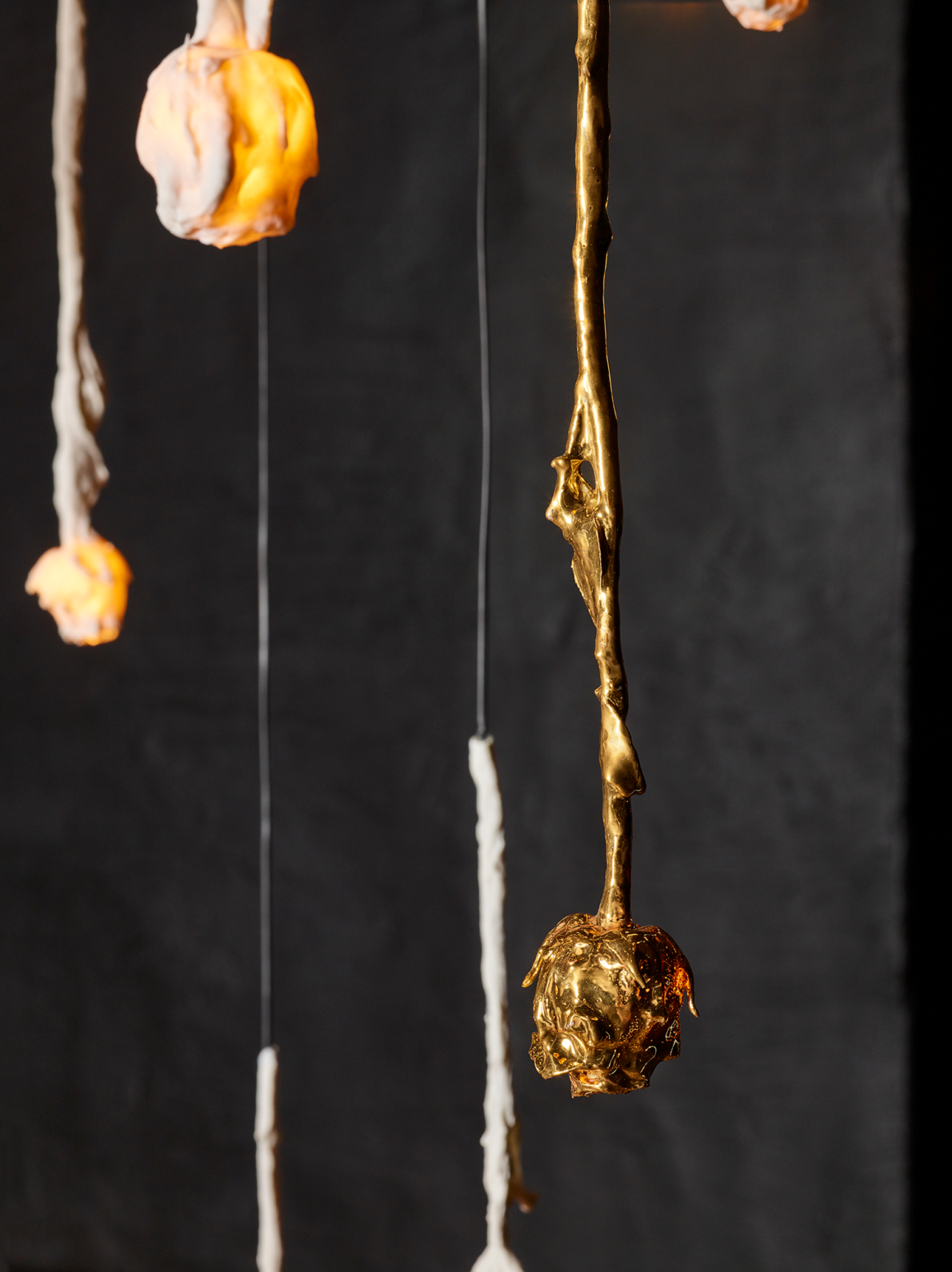
To link with your brand name coup-de-foudre, was it a coup-de-foudre with porcelain?
Jan: Yes, it was a coup-de-foudre with porcelain, but in the end the name was chosen by our first two clients. When they saw our work, they both said they had a coup-de-foudre of it.
Do you have mainly Belgian customers or do you also have some international customers on the left and right?
Good: We have been working with an architecture firm in Dubai for a while now, for which we were able to do some nice projects, but our lighting is already a bit all over the place.
Jan: Yes in California, Indonesia, London, Paris, etc. We have also been to Bordeaux, to see the owner of Alibaba, Jack Ma. He renovated a magnificent chateau, Château de Sours in Saint-Quentin-de-Baron, really incredibly beautiful, and there we were able to hang our lights in the tasting room and in the tower of the chateau.
Before Coup-de-Foudre was launched, did you have another job and did you say at some point that you were going to jump?
Good: I was a kindergarten teacher but really wanted to take a different path. Creativity is in my blood, I also come from a creative family. In addition to my job, I took lessons in fashion design, obtained my diploma as a florist and jeweller-goldsmith and, of course, took a course in ceramics. Jan continued to work full time as a station master with the SNCB, doing the long-term planning of passenger rolling stock. Something completely different actually, but it was easy to combine. We set up our business little by little, step by step. We are very happy that we did this together and that we are not dependent on others. I did have the advantage that I was permanently appointed, so I could try for five years, so to speak, and still go back. That gives you more security than when someone from the private sector has to resign. The first years were not easy financially. It was hard, but we kept our nerve.
Can you give some advice to the young starters among our members and readers?
Jan: Don’t give up on your dream, just continue. No matter how hard it is, keep going, don’t think about it too much and dare to jump.
Good: Also believe in your product I think. We had profiled ourselves from the beginning with theright target group. That is very important. If you believe in what you do and you make something unique, you should also dare to ask the right amount of money for it. The right price is necessary to be able to move forward, to be able to buy new materials so that you can move forward. It is a real search to find that balance.


What would you not do again?
Good thing: We used to work for a lighting company that worked with artists and we stayed there for far too long. In the beginning that went very well and put us in the right market. We also learned a lot there, but it limited our creativity. In the end, they required us to make a series, a family of lights each time. That’s not how creativity works. When we finally decided to leave, we realised that we had so much more to offer. This was the start of an exciting period in which we regained the freedom to follow our hearts.
Who or what did you learn the most from?
Good: By moving, going out and looking around. Also by art and by listening to the artists, because they have so much to tell. I also like it when people comment on our work, both positive and negative, it makes you think, reflect….
Jan: Criticism can be very justified. It is also a question of being willing to acknowledge it. It can be educational when someone tells you that you have completely missed the mark, and you have to be able to accept that. It makes you look for another and better way. Everything evolves. We evolve too and we continue to reflect. That self reflection is very important. It remains an eternal quest.
What else would you like to accomplish in your course?
Jan: Hang a spectacular installation somewhere, for example in a public place, or in a museum so that everyone can enjoy it. Go full throttle for once and make something really beautiful, or provide artificial stage lighting for a dance performance.
Is there a particular person or artist you would like to work with?
Good thing: We had once thought of working together with Lydie Arickx, a French artist, and with Filip Arickx of the clothing brand A.F. Vandevorst. So, an exhibition of artists bearing the name ‘Arickx’ or an exhibition of artists bearing the name ‘Vermandere’. We were thinking of Willem Vermandere and Peter Vermandere. However, we have never taken steps to realise this.
Which characteristic do you admire most about each other, Goedel and Jan?
Jan: Her incredible creativity!
Good thing: Jan’s drive and also his daring. It is because of his audacity that we have embarked on this adventure; when he gets his teeth into something, he really goes for it.
In any case, it shows a beautiful combination between the two of you and that is also reflected in beautiful products. Your story was very interesting and inspiring. I would like to thank you and wish you lots of success with everything you still want to do to pursue your dreams.
All information about Coup-de-Foudre can be found here: www.coup-de-foudre.be
If you would like to read more Purelocal stories, please visit: https://puredeluxe.be/en/purelocals/

